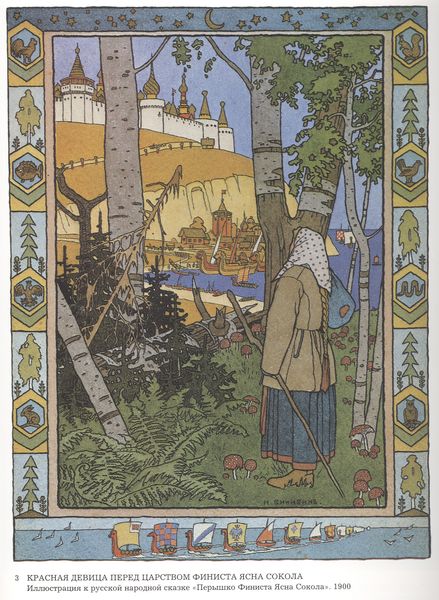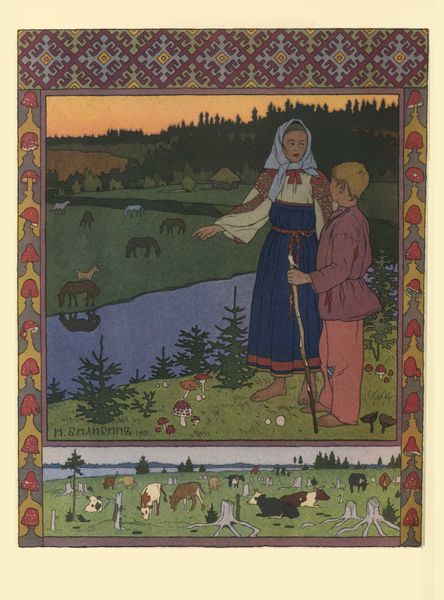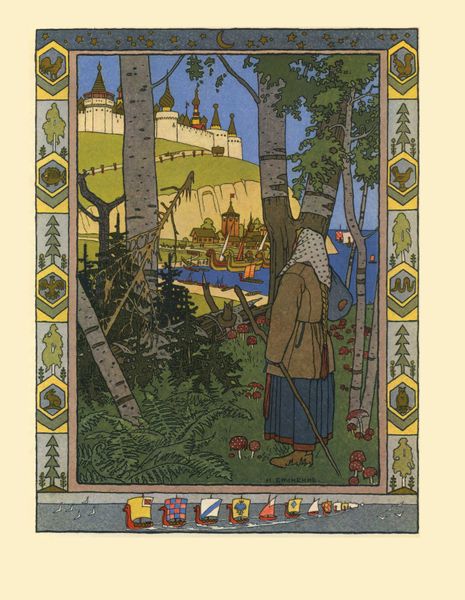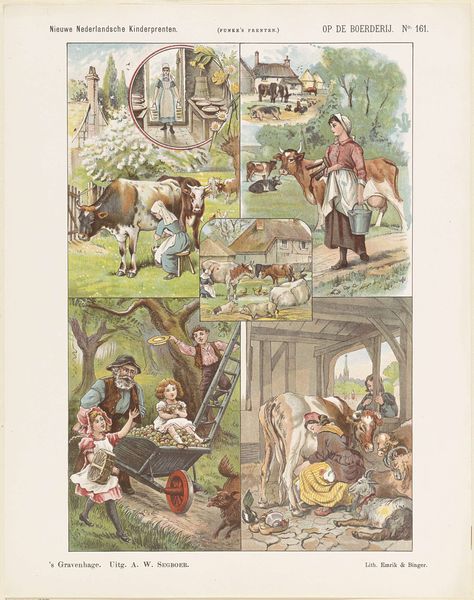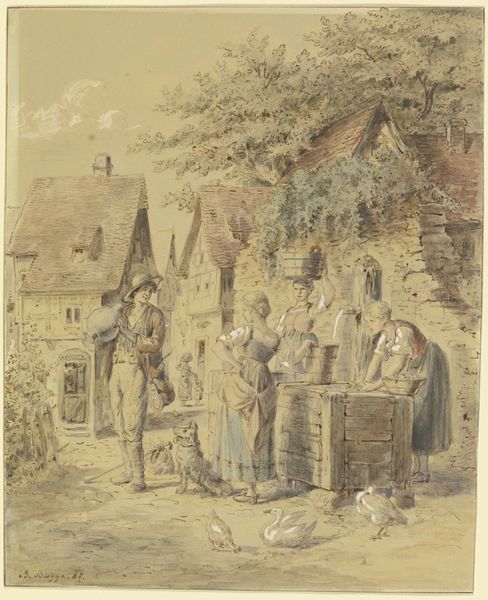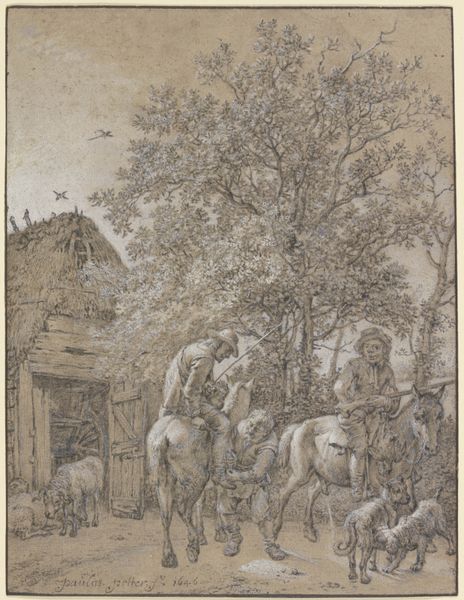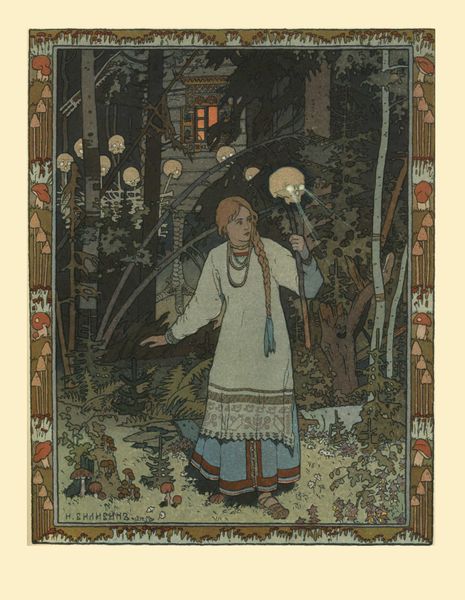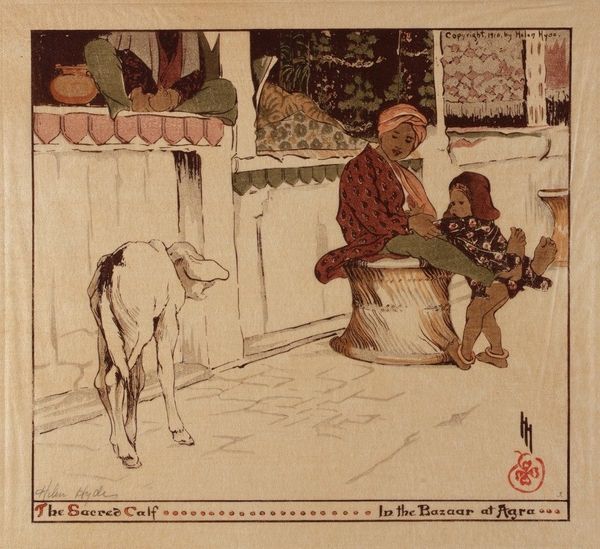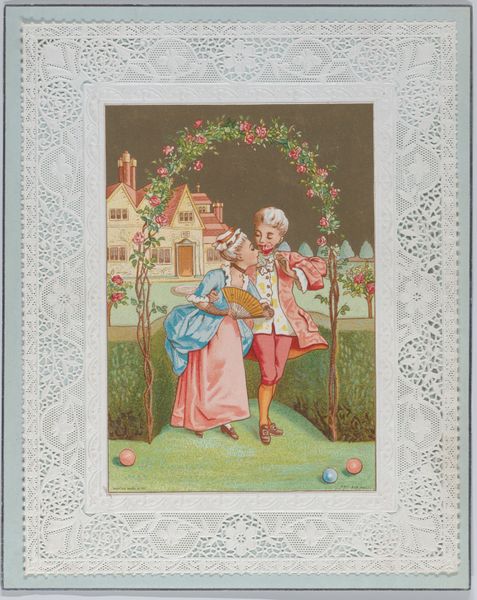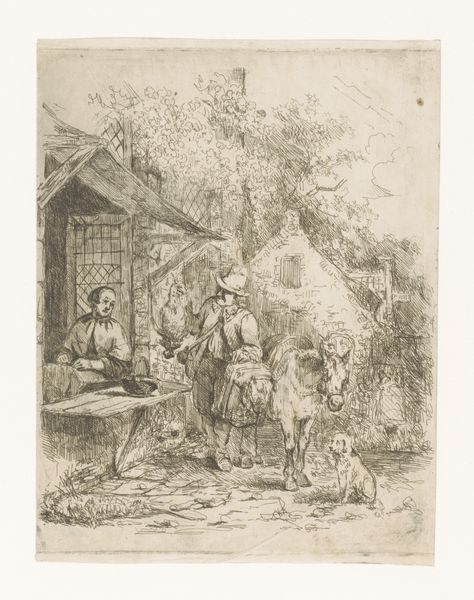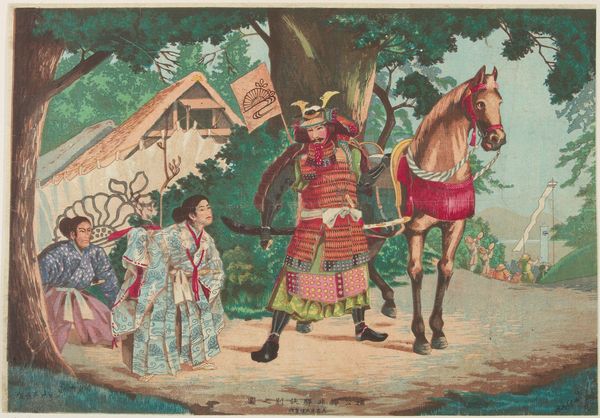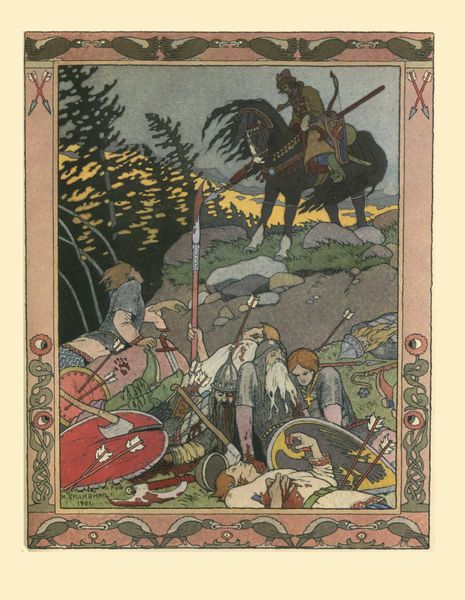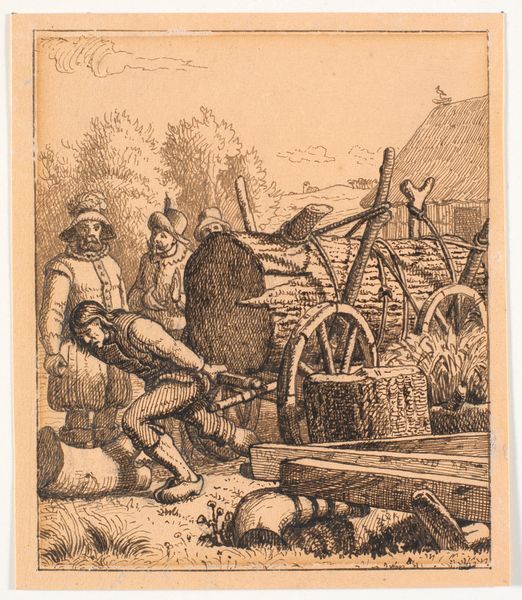
tempera, painting
#
narrative illustration
#
narrative-art
#
tempera
#
painting
#
folk-art
#
russian-avant-garde
Copyright: Public domain
Curator: Today we're looking at an illustration by Ivan Bilibin, specifically, his work for the Russian fairy tale "Feather of Finist Falcon." It’s executed in tempera, with great detail given to both the characters and the landscape. Editor: My initial impression is one of nostalgia; it’s almost as if the entire scene is encased in amber. There's something profoundly gentle in the composition, even a bit melancholy, as though the scene remembers a past era. Curator: I agree that the effect is striking. Considering its historical context, the artwork operates within a revivalist trend seeking to reinforce and indeed invent an authentically Russian national identity around the turn of the century. You see Bilibin pulling from folk art traditions but giving it an intensely mannered refinement, indicative of Russian Art Nouveau. This fairy tale theme is an excellent vector for conveying core cultural values, but also implicitly reinforces gendered roles. Editor: Precisely! And look closely at the craft. The lines defining the architecture of the wooden house, the horse’s harness, even the decorative borders framing the scene: the very execution embodies values like labor, patience, skill! It invites us to question, however, whose labor? Who had the means of production? And for what audience? Was it truly representative of Russian peasants’ lives, or an idealized image intended for bourgeois consumption? Curator: Indeed. Also, think about how the narrative embedded within the piece further reflects the cultural politics of its time. We’re offered a romantic lens into the power structures of traditional Russian society, which inherently impacts how female characters such as these are perceived and presented. Editor: Ultimately, Bilibin's work offers a fascinating study of material expression. The narrative of craftsmanship itself intertwines with the representation of peasant life. It reminds us that images like these, especially from this era, can carry complex ideologies related to craft, national identity, and even class relations. Curator: Absolutely, considering its role in crafting national narratives. We might walk away reflecting on how these traditional tales persist in shaping contemporary perceptions of Russian history and identity.
Comments
No comments
Be the first to comment and join the conversation on the ultimate creative platform.
